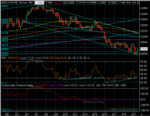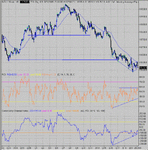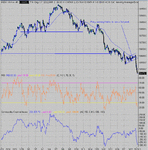Seventh increase since June comes as expected, with a tiny change in wording that could have big impact. Wall Street is spooked.
By MSN Money news services
The Federal Reserve boosted its key short-term interest rates Tuesday and signaled it would be more aggressive in using rates to stem inflation. You can expect the effects of this signal in the months ahead as rates on business, home and consumer loans start to move higher.
The Federal Open Market Committee raised its federal funds rate 0.25% to 2.75%. It was the seventh rate increase since June 2004. The Fed also raised its discount rate from 3.5% to 3.75%.
More important was the language of the statement issued with the rate increase. The Fed stayed with its intention to raise rates at a "measured" pace. But the committee said "Pressures on inflation have picked up in recent months and pricing power is more evident." But the Fed said higher energy prices, however, have "not notably fed through to core consumer prices."Banks and insurers
check your credit.
So should you.
Read the Fed statement.
Bond traders immediately sold Treasurys, and stocks fell on the news as well. The Dow, up 43 points at the time of the announcement, dipped as much as 140 points afterward, finishing the day far into the red. (Read more about the day's trading in Market Dispatches.)
Some mortgage experts predicted mortgage rates, now at about 6%, would jump to 6.5% or 7% by year-end.
Taking aim at inflation
As the stock market and economy reeled from the effects of the 2000 tech bust, the Fed tried to shore up the economy with 13 rate cuts between January 2001 and June 2003, bringing the fed funds rate down to 1%. Last year, Fed Chairman Alan Greenspan and others signaled that the central bank believed rates were too low and started to move them up. The key to the moves was the idea that rates would be boosted at a relatively relaxed rate (a "measured pace") because inflation wasn't really a problem.
Lately, inflation has begun to look like a problem. Crude oil prices have jumped more than 30% this year, and gasoline prices are up something more than 13.2%. At the same time, there have been noticeable increases for a number of commodities including, grains, iron, steel, copper and coffee. Meanwhile, home price appreciation has taken off, leaving many critics to fear the Fed's aggressive moves to cut rates have created a housing bubble.
Meanwhile, the Labor Department said today that its Producer Price Index (PPI) rose 0.4% in February, compared to a 0.3% increase in January. Economists were expecting the PPI would climb 0.2%. Excluding volatile food and energy prices, the core PPI rose 0.1% last month, up from a 0.8% increase the month before and in line with expectations.
Federal funds rate changes since June 2004
Date New rate Old rate Change (in basis points*)
March 22, 2005 2.75 2.5 25
Feb. 2, 2005 2.5 2.25 25
Dec. 14, 2004 2.25 2 25
Nov. 10, 2004 2 1.75 25
Sept. 21, 2004 1.75 1.5 25
Aug. 10, 2004 1.5 1.25 25
June 30, 2004 1.25 1% 25
* One basis point is 1 one hundredth of a percent. Source: Federal Reserve.
Gasoline prices saw the biggest price jump, rising 5.2%, while heating oil prices shot up 3.8%.
Since the Fed started raising rates last year, there has been what Fed Chairman Alan Greenspan called "a conundrum" at a Feb. 16 Senate hearing. Short-term rates were moving higher right in step with the Fed. But longer-term rates were not moving higher. Mortgage rates were either stable or falling. Greenspan suggested in his official text for a Congressional hearing (but not in the hearing itself) that the phenomenon might be "a short-term aberration."
And bond yields started moving higher, pushing mortgage rates with them. The rate on a 30-year mortgage, according to Bankrate.com has jumped from about 5.1% in February to 5.5% now.





